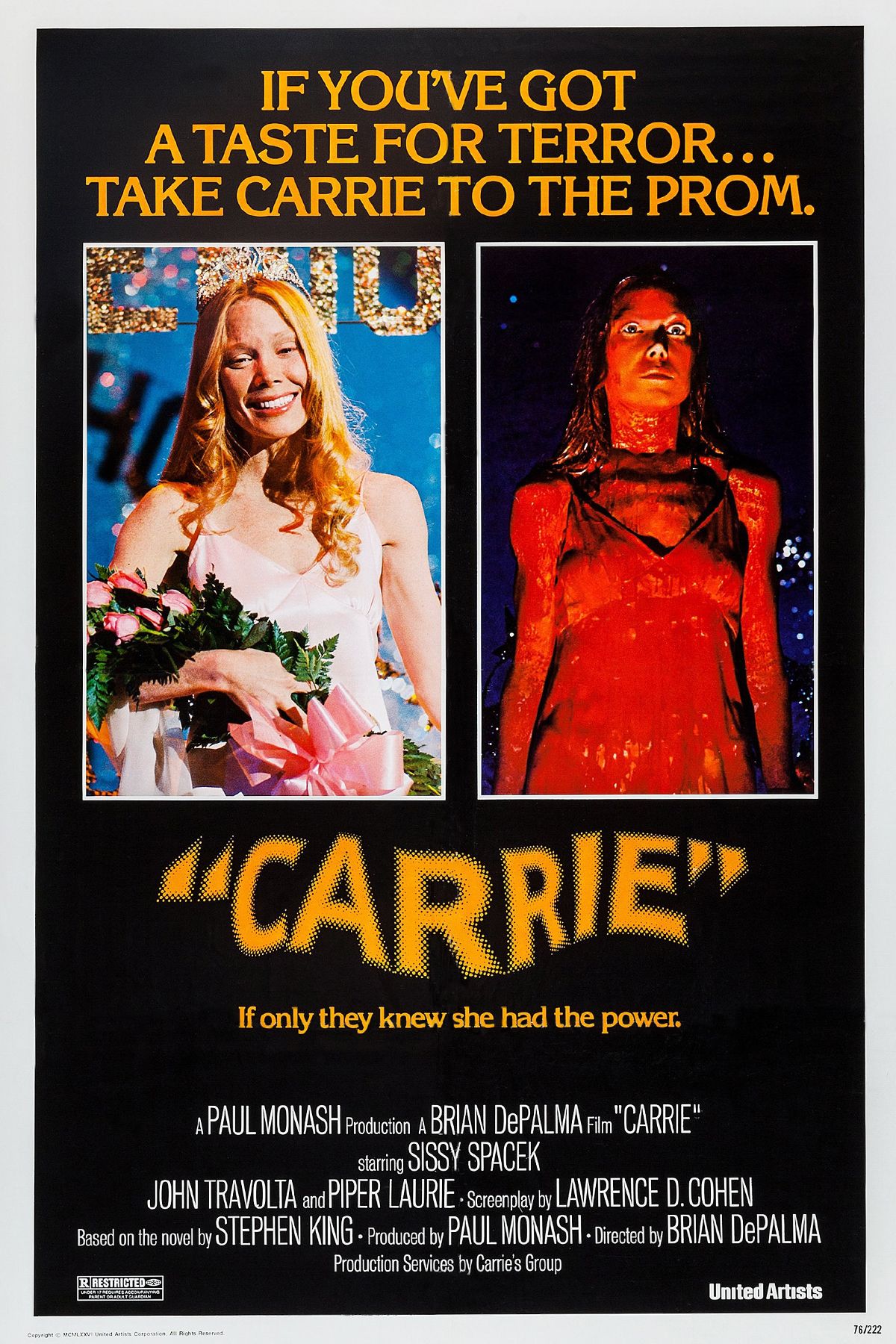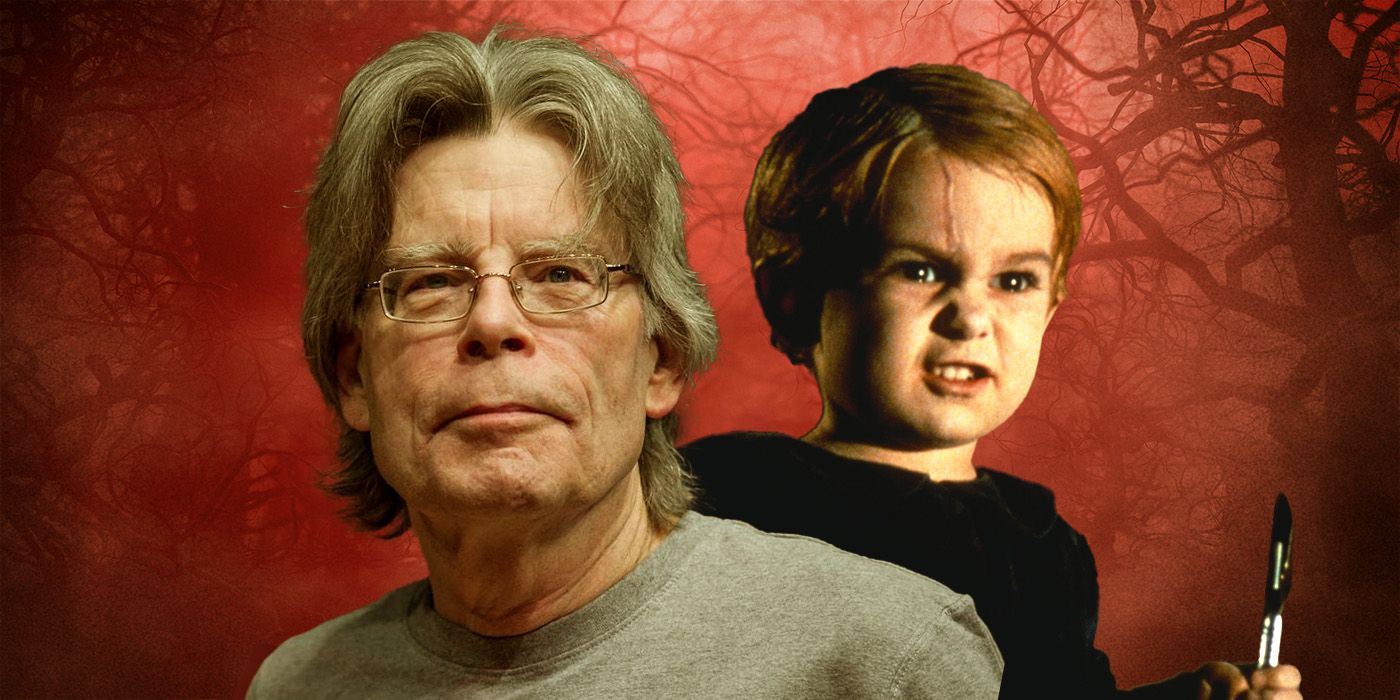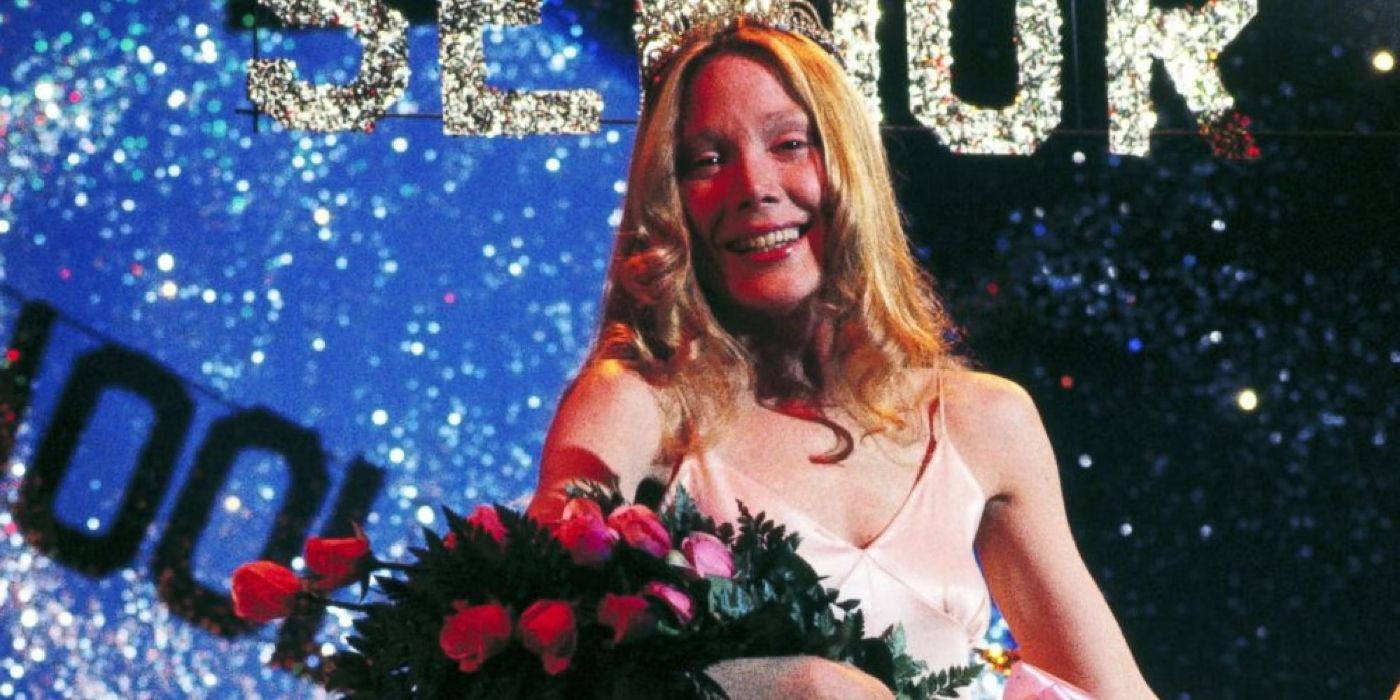The Big Picture
- Stephen King's inspiration for Carrie came from real life experiences, blending teenage cruelty, telekinesis, and supernatural elements.
- Carrie was first inspired by King's time as a janitor at a high school, connecting real-life events to supernatural horror.
- Personal experiences with bullied individuals from his youth and his readings on supernatural superstitions fueled King's creation of Carrie White.
Stephen King is one of America's most prolific writers, having written dozens of novels and hundreds of short stories. It all started, however, fifty years ago, in 1974, with his first novel, Carrie. Published when he was just 27 years old, Carrie is filled with the tropes King would be known for, with its protagonist being a younger person coming of age while being surrounded by unspeakable horrors. To read Carrie, your heart breaks as it races, because we sympathize with the pain of a bullied Carrie White, yet we're frightened of what's happening to her from her classmates and mother, and also scared of her own telekinetic abilities. Carrie was so popular that it became a hit movie directed by Brian De Palma and starring Sissy Spacek just a few years later. Every iconic Stephen King creation has its beginning, and Carrie is no different. King came up with the idea for the novel partly from his own life and partly from things he'd read, letting his wild imagination fill in the blanks.

Carrie
Carrie White, a shy, friendless teenage girl who is sheltered by her domineering, religious mother, unleashes her telekinetic powers after being humiliated by her classmates at her senior prom.
- Director
- Brian De Palma
- Cast
- Sissy Spacek , Piper Laurie
- Writers
- Stephen King
- Runtime
- 100
Stephen King's Experience as a Janitor Inspired a 'Carrie' Scene
Stephen King has written so many nightmarish tales over the last half century, but many of them find their original spark in his everyday life. For example, part of the inspiration for It came from sharing a plane ride with a man dressed as Ronald McDonald. Pet Sematary found its start in his own daughter's reaction to the death of her pet cat.
Carrie, about a telekinetic teenage girl bullied by her classmates and her religious fanatic mother, was the same, even though King was never a teenage girl or telekinetic. In his 2000 book On Writing: A Memoir of the Craft, King wrote about the birth of the novel that started it all. According to King, his brother Dave was employed as a janitor during the summers at Brunswick High. One summer, King decided to join him. Alone in the empty school, King was cleaning the girls' showers, scrubbing rust stains off the wall, when he noticed that the girls' showers had pink plastic curtains, a feature not found in the boys' showers. Later, when working in the laundry, the memory returned, and along with it came the beginnings of a story of girls showering in a school without curtains. Suddenly, one of the girls has her first period and is confused by it. King wrote:
"And the other girls – grossed out, horrified, amused – start pelting her with sanitary napkins … The girl begins to scream. All that blood!"
There is a lot of fear to be found in that image — adolescence is a scary time, with our bodies rapidly changing like some sort of alien being we no longer have control of. Add in the fear of the unknown, experienced by a teenage girl who doesn't know what a period is, and you have something horrifying without anything else being added.
Stephen King Began To Connect the Dots for 'Carrie' After Reading About Telekinesis
This being Stephen King, the story couldn't end there. Something supernatural that turned the horror all the way up had to be thrown in. King found further inspiration when he recalled a LIFE magazine article he'd read years earlier about telekinesis. The writer of the article had theorized that what some people claim to be poltergeist activity is instead a telekinetic phenomenon. If you see something moved by an invisible hand, it might not mean a ghost did it, but instead the power of someone's mind. The article went on to provide some evidence that young people could be prone to telekinesis, especially teenage girls during a certain time of the month. A light bulb went off for Stephen King as it came together. He wrote:
"POW! Two unrelated ideas, adolescent cruelty and telekinesis, came together, and I had an idea."
Whether he knew it or not at the time, linking teenage bullies and first periods to telekinesis made sense. If telekinesis is an unwanted power, so might a period be for a young woman who doesn't want the pain, who doesn't want to be different, who doesn't want to be made fun of. And just like bullies can't be controlled, neither can a supernatural power.

Stephen King Refused To Let Producers Cut This ‘Pet Sematary’ Scene
Gage's most haunting moment isn't the one you're thinking of.Two People From Stephen King's Life Inspired Carrie White
Stephen King began writing the first draft of what would become Carrie, but not even two pages in, more inspiration struck from his real life. This wasn't from his imagination or from what he'd read, but from people he'd actually known, a girl and a woman who were no longer living.
The girl was someone he'd went to school with at Durham Elementary School. He referred to her as Tina, a child who was relentlessly bullied. She was the type to have the KICK ME HARD sign put on her back and was last in everything. Stephen King said it wasn't because she was thought of as being stupid, but simply because she wore the same clothes every day to school. The other person was a woman King called Sandra, who lived close by to where he grew up. She hired young Stephen to help move some furniture in her home, and when he showed up, he found himself in awe of the crucifix hanging over her living room couch. King wasn't struck by this sight because he'd found Jesus, but being King's runaway imagination, he was thinking about how if Sandra and her husband were watching TV and the crucifix fell off, they'd be killed.
Stephen King had the building blocks of an interesting story, but as he admitted in On Writing, "I did three single-spaced pages of a first draft, then crumpled them up in disgust and threw them away." What could have been Carrie would have been lost forever, and maybe King's entire writing career along with it, had his wife, Tabitha (an accomplished writer herself), not taken the pages out of the trash while her husband was at school and read them. She went so far as to wipe the cigarette ashes from the pages and to smooth them out from their crumpled ball form. King wrote, "She wanted me to go on. She wanted to know the rest of the story." Thankfully for Stephen King and his now millions of fans, his wife believed in him. The real hero of Carrie isn't Stephen King or Carrie White — no, it's Tabitha King.
Carrie is available to stream on Max in the U.S.

